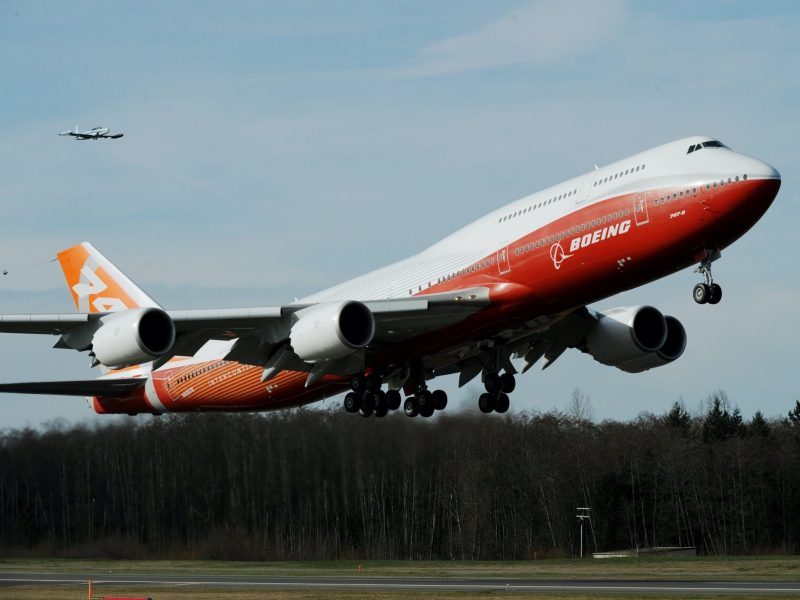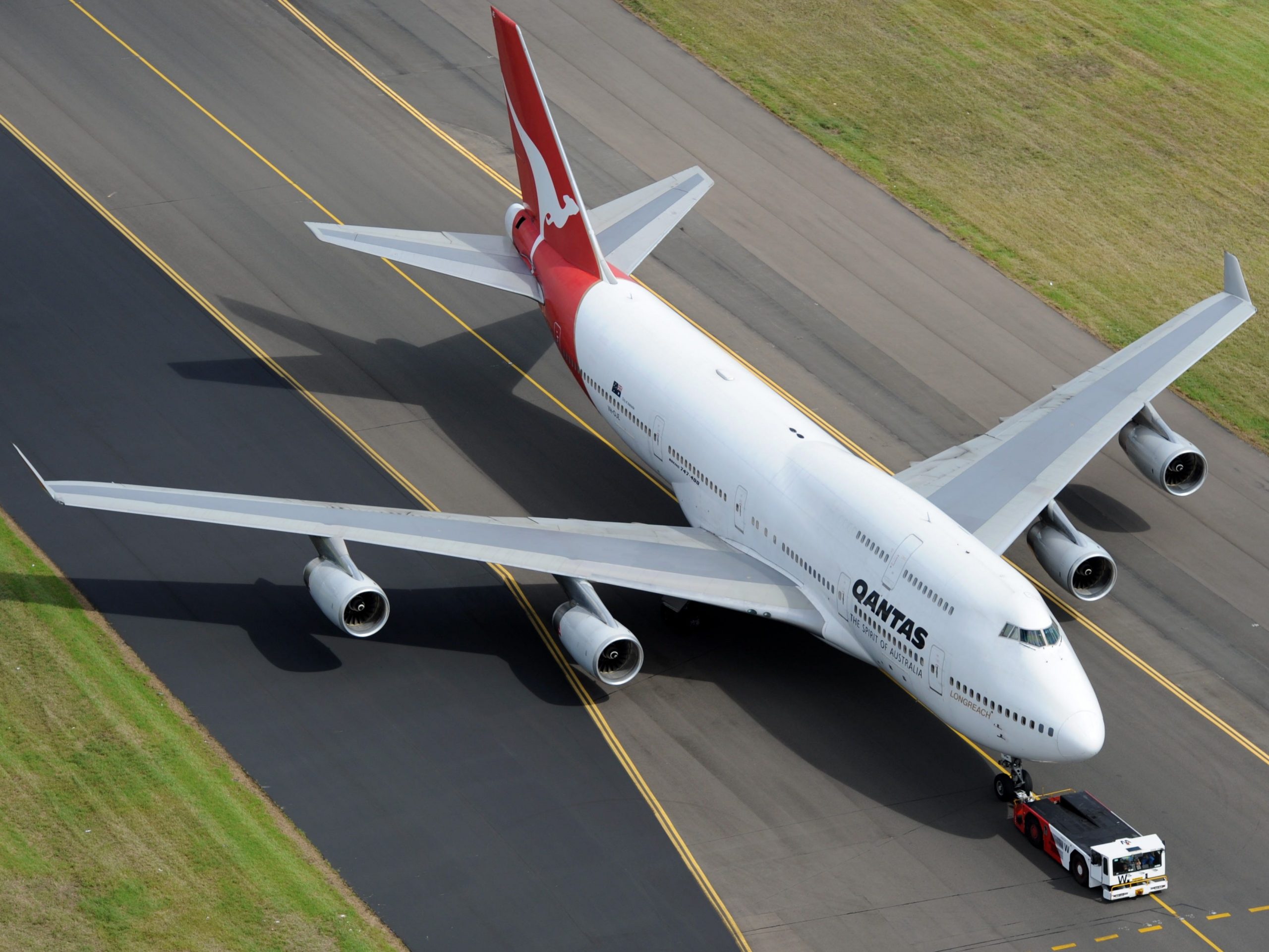- The Boeing 747 revolutionized air travel when it debuted as the world’s largest passenger jet in 1969.
- The first-of-its-kind shape and design of the plane allowed airlines to get creative, offering luxurious amenities such as onboard bars, restaurants, and lounges.
- Even to this day, the 747 has unique aspects that no other jet has been able to offer, firmly establishing it as the true Queen of the Skies.
- Visit Business Insider’s homepage for more stories.
Aviation’s love affair with the Boeing 747 has been going strong for over 50 years with the affectionately-nicknamed Queen of the Skies turning heads since its first flight in 1969.
Still Boeing’s largest passenger aircraft to this day, the 747 story began with a request from the head of Pan American World Airways, CEO Juan Trippe, for a larger jet than anything currently in production. Airlines had gotten a taste of the jet age with the Boeing 707 and Douglas DC-8 and wanted more so they could fly passengers further than ever before.
Fresh from pitching a similarly massive four-engine plane to the US government, Boeing answered the call. Now-famed aerospace engineer Joe Sutter designed the plane, which took its first flight on February 9, 1969 and entered passenger service with Pan Am less than one year later.
Many of the jet’s best features came as a result of its massive size and unique design, including the iconic upper deck – known as the hump – that housed the cockpit and a select few passenger seats. But after decades of faithful service, airlines are giving their 747s heartfelt goodbyes and paying homage to the plane that changed aviation forever and advanced the industry further than most planes at the time of its inception.
Take a look at what made the Boeing 747 a true Queen of the Skies.
1. The Boeing 747's iconic hump sets it apart from the rest.

The hump housed the cockpit on the upper level so that a nose door could be installed for cargo loading, making the 747 an ideal freighter still utilized by cargo airlines today.

Source: Business Insider
The nose door was a rare feature for a jet with few other aircraft offering the feature at the time besides the 747.

Only a handful of types have nose doors even today, including the Antonov An-225 Mriya...

Antonov An-124 Ruslan...

And Lockheed C-5 Galaxy.

2. The excess space of the Jumbo Jet in the hump and the nose allowed airlines to offer onboard luxuries like bars, lounges, and restaurants.

Most were retired in 1973 when the oil crisis dramatically raised the price of fuel and airlines couldn't spare the extra room. But some airlines, like Virgin Atlantic Airways, brought the bars back to the jet.

Source: Business Insider
Luckily, the 747 has one of the largest passenger cabins of any commercial aircraft, so there was a lot of open space was to fill with seats to increase revenues.

With no more bars and lounges taking up space, the nose section typically features first or business class seating,

While the hump primarily houses business class seating, depending on the airline, in an exclusive cabin literally above the rest of the passengers on the main deck.

3. The normal seating capacity for the largest variant of the 747 is around 375 but the jet can hold over 1,000 people if need be.

4. Some airlines used the jet to carry passengers and cargo on the same level.

Known as Combi aircraft, half of the main deck had passenger seating while the other had a cargo hold where larger containers could be stored. Horses were among the frequent flyers in the cargo hold with flight attendants often letting passengers go back and see the livestock mid-flight.

5. The 747's four-engines make it just slightly faster than its competitors.

Just before the pandemic hit, a British Airways 747 set a speed record on the New York to London route by making the transatlantic journey in four hours and 56 minutes.

Read More: Extreme tailwinds helped 3 planes break records flying from New York to London in under 5 hours
Two twin-engine planes from Virgin Atlantic Airways lost to the 747 by mere minutes.

They were both A350-1000 XWBs; ironically, one of the next-generation jets replacing the 747.

The 747 has also helped earn British Airways over $1 billion in revenue on the New York-London from April 2018 to March 2019.

Read More: These 10 global flight routes are where airlines made the most money in 2018 and 2019
6. Boeing made the Jumbo Jet even larger with the 747 Large Cargo Freighter, also known as the Dreamlifter.

The Dreamlifter was purpose-built to fly parts for the Boeing 787 Dreamliner around the world.

Aircraft parts are loaded through a special hinged tail door.

Without the plane and its massive cargo cabin, Boeing wouldn't be able to build Dreamliners as quickly as it does today.

Ironically, the Boeing 787 Dreamliner is similarly replacing the 747 at airlines like Qantas and British Airways as the twin-engine jet can operate more efficiently and fly comparable routes.

7. Some passengers sit ahead of the pilots.

The nose section is located directly below the cockpit with some rows further forward than the cockpit.

Sitting in seat 1A is often a bucket list item for aviation enthusiasts.

Not only is it at the very front of the plane but the seat's occupants can actually see ahead of the plane due to the curvature of the nose.

So while all the passengers will arrive at their destination airport at the same time, those in 1A will see the runway first.

8. The 747 comes in fun-size.

Boeing built the 747SP for Pan Am as the airline desired more range from the iconic aircraft.

Keeping the same number of engines and building a smaller fuselage, Boeing was able to greatly extend the range of the 747, allowing for longer nonstop flights.

South African Airways was one of the aircraft's first customers since it needed a long-range plane to skirt the airspace of African countries from which it was banned due to apartheid.

9. It's the largest private jet in the world.

The Boeing Business Jet 747-8i is currently the largest private jet in the world acting as a flying palace to the world's elite.

It's also one of the most exclusive as it has a $419.2 million price tag just to purchase from Boeing, and that's before any interior design and completion work.

Source: Boeing
The priorities for the wealthy owners are very different from the airlines, with the private jet variant of the jet offering no shortage of luxury in every compartment and no economy class in sight.

Even the hump had been restored to its former glory as a lounging area.

10. NASA's Space Shuttle flew on the 747.

Space Shuttle Endeavour performed a three-day tour of the US strapped to the back of a 747 in 2012 following the end of the Space Shuttle program.

Source: National Aeronautics and Space Administration
The flying duo showcased some of the greatest American feats of aerospace engineering.

NASA also relies on the 747 for its SOFIA, or Stratospheric Observatory for Infrared Astronomy, program.

Source: National Aeronautics and Space Administration
The jet houses a massive telescope that lets scientists view the solar system from high above the Earth's surface and away from infrared interference.

Source: National Aeronautics and Space Administration
11. The 747 has outlasted its double-decker competitors, namely the Airbus A380.

Airbus' largest passenger jet took to the skies over 30 years after the 747's first flight and still failed to surpass the American jet in popularity and success.

The final A380 fuselage was just trucked to the Airbus factory in Toulouse, France, marking the end stages of the program.

Emirates will receive the last plane, with the Middle Eastern mega airline the only one keeping the program going.

12. The most iconic Boeing 747 is flown by the president of the United States.

The US Air Force has two of the VC-25A aircraft, the codename for the service branch's 747s, that solely fly the president and his staff.

The current planes are based on the aging Boeing 747-200 airliner, which most airlines have retired.

It's the most recognizable plane in the world and arguably America's greatest aerial ambassador.

The Air Force will soon be upgrading the jets to two Boeing 747-8i aircraft, known in the branch as VC-25Bs.

Though President Donald Trump has changed the paint scheme.


